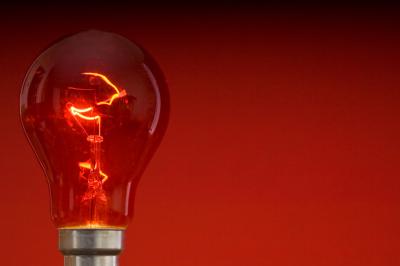Our modern lifestyles are powered by several different sources. While scientists are hard at work trying to figure out more efficient and environmentally friendly ways of generating this energy, there are some fuels that we just can’t do without for the time being. Conventional sources of energy are ones that have been with us for a while, and American citizens use them every day, both at home and at work.

Coal is a sedimentary rock formed when living matter is compressed over a long period of time. Like all fossil fuels, it is nonrenewable, which means that once we use all of it, it’s gone. According to the Energy Information Administration, there are four different kinds of coal, classified by how much carbon they contain. The harder the coal, the darker it is and the more energy it contains. Coal is plentiful in the United States, unlike other kinds of fossil fuels.

Petroleum (oil) is a liquid hydrocarbon that was also formed by decomposing organic matter. The U.S. Department of Energy points out how important oil is to Americans, as it accommodates more than 40 percent of American energy needs and accounts for more than 99 percent of the fuel we put into our cars. Like coal, oil is used to produce electricity by burning it to boil water, which is subsequently put through a turbine that generates power.

Natural gas is a colorless, shapeless and odorless gaseous hydrocarbon that is often found atop oil deposits. (In order to make it safer, the government adds a chemical that makes the gas smell like rotten eggs, so you know if there’s a leak.) Natural gas is often used in homes and businesses as fuel for water heaters and stoves and furnaces. In recent years, it has been used to power municipal buses, as it is considered slightly cleaner than gasoline. (It’s definitely more plentiful.)

Hydropower has been with humanity for a long time. To take advantage of the energy in a rushing river, people put a wheel under the surface to capture the mechanical energy. Originally, these water wheels powered grain mills, spinning a grindstone directly. As the nation became electrified, the water’s mechanical energy was used to spin turbines, generating electricity. Niagara Falls is studded with power plants that serve people in both Canada and the U.S.

Wood and other biomass (carbon-based materials) contain less energy than oil or coal, because their carbon has not been condensed over millions of years. On the other hand, wood produces portable, easy-to-control energy. Wood stoves in homes keep people warm, and wood is always a quick, easy solution for a midsummer barbecue.

Most people wouldn’t immediately consider nuclear power a commonplace form of energy. Engineer, professor and wind turbine designer Frank Leslie, however, includes it on a list of conventional energy sources. Perhaps he’s right. After all, nuclear technology has been refined since it was first harnessed, demonstrating a exemplary safety record marred only by the meltdowns at Chernobyl and Three Mile Island. Perhaps nuclear power should be considered conventional as, in the past year, American power plants generated 8.5 quadrillion BTUs of energy, supplying approximately 20 percent of our electricity supply.
